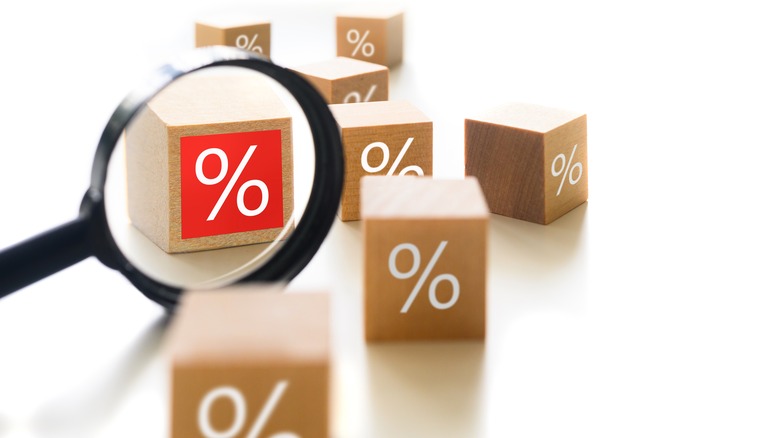Mortgage Rates Have Soared To A 16-Year High. Here's When We Can Expect Them To Fall Again
The housing market has been on a roller coaster ride over the past several years. The volatility during the 2020 shutdown resulted in an 18% drop in home sales in March and April of that year, via Forbes. As businesses closed and unemployment began to rise, the economic instability at that time created a real sense of uncertainty in the United States. In response, the Federal Reserve lowered interest rates in April 2020 to almost zero, reducing the 30-year fixed mortgage rate. In December 2020, the 30-year fixed rate was 2.68%, according to Freddie Mac. By September 2022, this rate had climbed to 6.11%. How did this increase occur, and when can we expect interest rates to fall again?
The Federal Reserve has been steadily raising interest rates over the past year to combat the rise in inflation, and no market feels the impact of these decisions like the housing market. Lawrence Yun, the chief economist at the National Association of Realtors, says housing is the area of the economy that is "most sensitive to" the Federal Reserve's hikes in interest rates (per Forbes). As a result, housing affordability is at a level we haven't seen in 37 years, per Yahoo! Money.
Red-hot housing market
As pandemic restrictions began to ease in 2021, homebuyers who delayed making a purchase the previous year were motivated to take advantage of the lower interest rates. Telecommuting became the norm, and employees who were no longer required to travel to an office were moving away from higher-priced cities and choosing areas that were more affordable. This high demand for real estate sent home prices soaring.
Jerome Powell, chairman of the Federal Reserve, addressed this trend in his press conference in September 2022, via The Federal Reserve. He explained why this development created a need to raise interest rates: "We've had a time of a red hot housing market, all over the country, where famously houses were selling to the first buyer at 10 percent above the ask, before even seeing the house. So, there was a big imbalance between supply and demand and housing prices were going up at an unsustainably fast level. Powell continued, "For the longer term what we need is supply and demand to get better aligned so that housing prices go up at a reasonable level, at a reasonable pace, and that people can afford houses again."
Will there be a Fed Pivot?
However, some experts say the Fed has gone too far in raising rates. They wonder if there is an upcoming "Fed Pivot," where interest rates will begin to decrease, per InvestorPlace. World events indicate that other countries may slow their tactics to combat inflation in their economies. The United Nations has told Chairman Jerome Powell that he must slow these rate increases before there is a devastating effect on developing countries. The central banks of Australia and Poland surprised observers by raising their interest rates either by less than expected or not, leading many to wonder if these actions would affect the rise in American interest rates.
Chairman Powell said he would continue to raise rates until inflation is under control, but before we enter a recession, per The Federal Reserve. Powell estimates this point to be when inflation has reached 2%. The chairman reinforces to the American public that he is taking the steps he believes are right for the economy now but also acknowledges that these steps are not easy and are bound to change in the future. After all, Powell explains, the tools that the Fed uses are "famously blunt tools. They're not capable of surgical precision."


